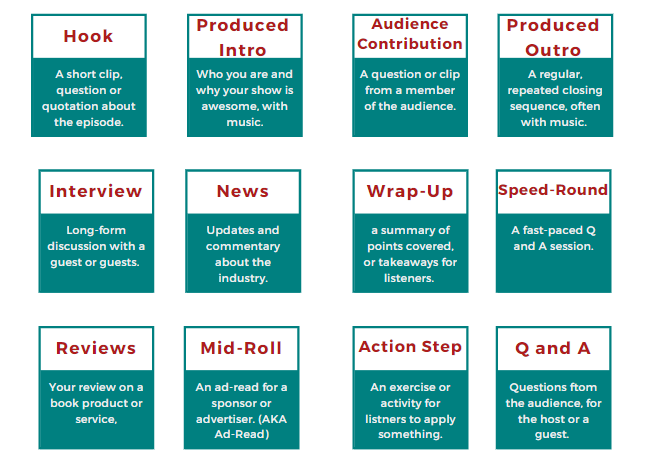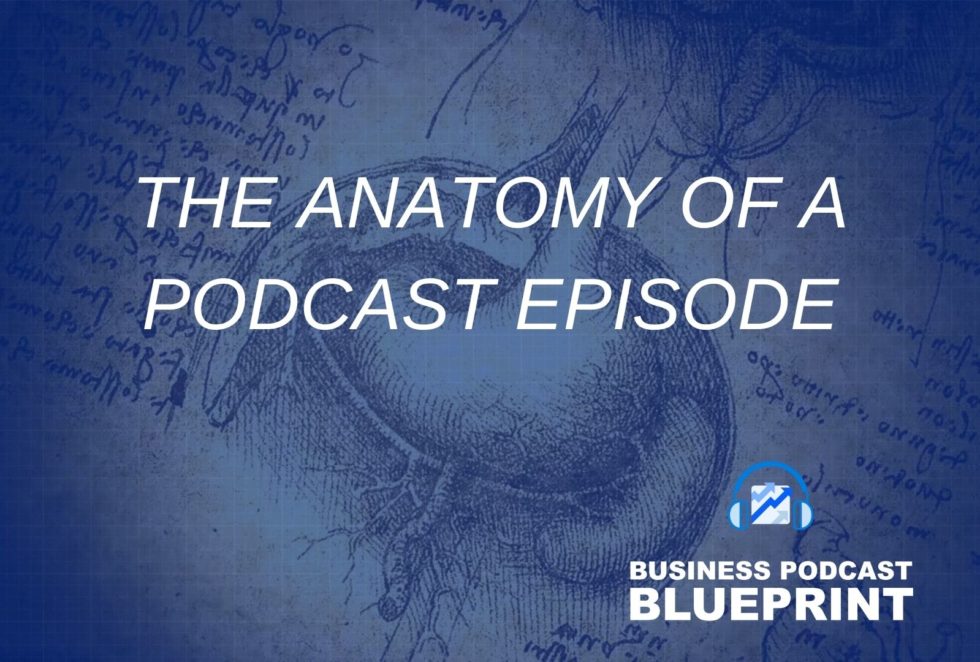A business podcast, or even one that you take seriously as a hobby, needs a thoughtful structure. A good podcast episode has anatomy, and understanding the different options for parts can help you to make the best possible choices. That’s what we’re discussing this week on the Business Podcast Blueprint.
We’re talking about:
- The hook, aka the sizzle clip: This plays before a produced intro, and can be a clip of the audio that comes later, or written and recorded to open the show. What listeners hear should be interesting and compelling without additional context, so they listen to the rest of the episode.
- The produced intro and welcome: A piece of audio branding that’s the same in each episode. It usually includes theme music and a voice over, and should be concise and very clear. The welcome involves greeting your audience, providing news or updates relevant to your community, and can be used as an opportunity to introduce your guest.
- The main body content: This is the meat of your show; it can be an interview, solo, panel discussion or whatever format you want. It takes up most of the time, and delivers the most value.
- The closing and outro: The closing is optional, but if you ask for audience engagement or provide final thoughts, this is where they would go. The outro is the bookend to the produced intro, and with a standard goodbye where you might ask for shares and subscribes.
- Incorporating ads: Ads should either be baked in with the main body content, or treated as a separate segment. Either way, you need to pivot to and from it with ad transitions, which indicate that an ad is about to happen, and when you’re back to continue the show.
- Topical segments to include: These are segments that add some important strategic or aesthetic benefit to your show and allow you to showcase your creativity, such as news, QandA, action steps, and reviews and recommendations.
Podcast Segments Arrangement
This is an example of how you might choose to order different segmetns in your show. The “meat” of the episode is by far the largest part, and the “top” and bottom segments will provide the frame it fits within.

Here is a graphic with some of the different segments you might choose to include.

Some podcast segments are repurposing gold, especially anything that collects many different opinions or methods on a similar idea. Think: What is your best time-saving tip? After a year of podcasting, you have an amazing collaborative library of ideas to share. Here is our rundown on how to repurpose your content!
RESOURCES
Megan Dougherty | LinkedIn | Twitter
Product Thinking with Melissa Perri

